Unit 2 rig types and rig selection
ТЕХНИЧЕСКИЙ УНИВЕРСИТЕТ»
Кафедра иностранных языков
Учебно-методическое пособие
по английскому языку и профилированному английскому языку
для студентов 2 курса специальности ГБ, БГБ
горно-нефтяного факультета
Уфа 2017
Данное учебно-методическое пособие предназначено для аудиторных занятий со студентами 2 курса специальности ГБ, БГБ горно-нефтяного факультета в третьем и четверном семестрах. В группах с более продвинутым уровнем владения английским языком его можно начать выборочно использовать со второго семестра. Оно может использоваться и для самостоятельной работы студентов специальностей БГГ, БГР и БГШ горно-нефтяного факультета.
Цель учебно-методического пособия – развить у студентов навыки чтения, перевода и реферирования текстов по профилю изучаемой специальности. Материалом для составления пособия являются аутентичные тексты. Помимо традиционных упражнений на проверку понимания содержания прочитанных текстов, в каждом уроке даются задания в тестовой форме на закрепление лексического материала, задания на передачу содержания текста на английском или русском языках, а также выборочный письменный перевод с английского языка на русский.
Составители: Кожевникова А.И, ст. преподаватель
Хильшер Г.Н., ст. преподаватель
Рецензент: Хатмуллина Р.С., доцент, к.филол.н.
© Уфимский государственный нефтяной технический университет, 2017
CONTENTS:
Unit 1. Well planning. ___________________________________________ 4
Unit 2. Rig types and rig selection. _________________________________ 8
Unit 3. Drilling the well. _________________________________________ 12
Unit 4. Drilling systems and equipment._____________________________ 15
Unit 5. Drilling fluids. ___________________________________________ 21
Unit 6. Site preparation. __________________________________________ 26
Unit 7. Drilling techniques. _______________________________________ 30
Unit 8. Directional drilling. ________________________________________ 35
Unit 9. Horizontal drilling. ________________________________________ 40
Unit 10. Extended reach drilling (ERD). ______________________________ 43
Unit 11. Slim hole drilling. Coiled tubing drilling. ______________________ 47
Unit 12. Casing and cementing. _____________________________________ 51
Unit 13. Drilling problems. Stuck pipe. _______________________________57
Unit 14. Fishing. Lost circulation. __________________________________ 61
Appendix
Texts for written translation 1-15 ____________________________ 65
UNIT 1 WELL PLANNING
1.1. Remember the meaning of the following words and word combinations:
acquisition of information - сбор информации
safeguarding of production - обеспечение безопасности добычи
expenditure - расход
involve - вовлекать, привлекать
profitability - прибыльность, выгодность
employ appropriate technology - использовать соответствующую технологию
drilling engineering - технология бурения
avoid - избегать
relieve a blowout - снизить давление выброса (из скважины)
provide information - предоставить информацию
prior to the design - до проектирования
drilling rig - буровая установка
predict - предсказывать
encounter - встречать
depth - глубина
penetrate - проникать
drill bit - буровая головка, буровая коронка
target - цель
expect - ожидать
maintain reservoir pressure - поддерживать пластовое давление
inject - закачивать,, нагнетать
accuracy - точность
prevail - преобладать
spell out - уточнять, подробно излагать
quantify –определять количество
offset well - соседняя скважина, подсасывающая скважина
casing string - колонна обсадных труб
mud weight - удельный вес бурового раствора
hardware- арматура
angle - угол
estimate costs - подсчитывать затраты
evaluation - оценка
1.2. Read and translate the text using a dictionary:
WELL PLANNING
Drilling operations are carried out during all stages of field development and in all types of environments. The main objectives are the acquisition of information and the safeguarding of production. The drilling of a well involves a major investment (typically 20% to 40% of the total project’s capital expenditure).
Drilling engineeringis aimed at maximizing the profitability of this investment by employing the most appropriate technology and business processes, to drill a quality well at the minimum cost, without compromising safety or environmental standards. Successful drilling engineering requires the integration of many disciplines and skills.
Careful planning of drilling activities will avoid unnecessary expenditure or risks. The planning process is vital for achieving the objectives of a well. Usually, wells are drilled with one, or a combination, of the following objectives:
* to gather information
* to produce hydrocarbons
* to inject gas or water
* to relieve a blowout
To optimize the design of a well it is desirable to have an accurate picture of the subsurface. Therefore, a number of disciplines will have toprovide information prior to the design of the well trajectory and before a drilling rig and specific equipment can be selected.
Geologists and seismic interpreters will predict types and depths of different rock formations to be encountered during drilling. They will advise the drilling engineer where the objective zone should be penetrated by the drill bit and they will provide the target(s) of the well. Petrophysicists will advise on the fluid distribution and reservoir engineers will provide a prognosis of pressures along the planned well trajectory (Fig. 1).
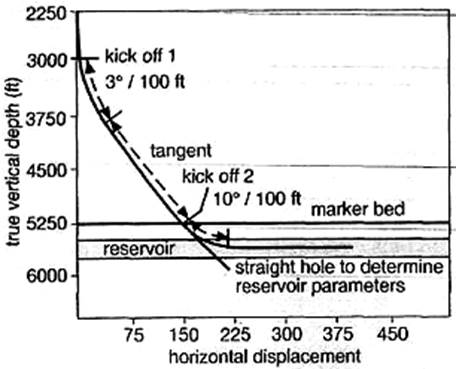
Figure 1. Planned well trajectory for a horizontal well.
These subsurface disciplines will also specify what information they expect to be gathered, from which formation they want to produce or where gas or water should be injected to maintain reservoir pressure. The accuracy of the parameters used in the well planning process will depend on the knowledge of the field or the region. Particularly during exploration drilling and during the early stages of field development considerable uncertainty in subsurface data will prevail. It is important that the uncertainties are clearly spelled out and preferably quantified. Potential risks and problems expected or already encountered in offset wells (earlier wells drilled in the area) should be discussed and incorporated into the design of the planned well.
All the information is documented in a comprehensive well proposal which forms the basis for the drilling engineering planning input. This is ‘translated’ into a drilling programme, an example of which is shown below.
In summary, the drilling engineer will be able to design the well in detail using the information obtained from the petroleum engineers and geoscientists. In particular he will plan the setting depth and ratings for the various casing strings, mud weights and mud types required during drilling, and select an appropriate rig and related hardware, e.g. drill bits. Considerable effort will go into optimisation of the well path (well trajectory), i.e. at what angle and in which direction the hole will be drilled. The planning details will also allow the engineer to estimate the costs, which in combination with other data will allow an evaluation of the profitability of the project.
1.3. Translate the following word combinations into English. Use the text:
Разрабатывать месторождение, основные цели, тщательное планирование, ряд дисциплин, выбрать оборудование, точная картина недр земли, встретить пласт, поддерживать давление пласта, разведочное бурение, затраты на планирование технологии бурения, получать информацию, значительные усилия, подсчитать затраты, прибыльность проекта.
1.4. Match the words in list A with the words from list B to make word combinations.
Translate them:
А B
1) drilling a) trajectory
2) rock b) standards
3) drill c) weight
4) reservoir d) bit
5) offset e) processes
6) casing f) engineering
7) mud g) formations
8) well h) well
9) environmental i) pressure
10) business j) string
1.5. Fill in the gaps in the sentences using one of the following verbs:
a) go into, b) predict, c) advise, d) prevail, e) involve,
f) avoid, g) depend, h) provide, i) specify, j) plan
1) The drilling of a well will __________ major investment.
2) Careful planning of drilling activities will ___________ unnecessary expenditure
or risks.
3) A number of disciplines will have to _________ information prior to the design of
the well trajectory.
4) Geologists and seismic interpreters will _________ type and depth of different
rock formations.
5) Petrophysicists will __________ on the fluid distribution.
6) Subsurface disciplines will _________ what information they expect to be
gathered.
7) The accuracy of the parameters will ________ on the knowledge of the field or the
region.
8) During exploration drilling considerable uncertainty in subsurface data will
_________.
9) The drilling engineer will ___________ the setting depth.
10) Considerable effort will __________optimisation of the well path.
1.6. Answer the following questions on the text:
1) What are main objectives of well planning?
2) What information will geologists and seismic interpreters provide?
3) What’s the task of petrophysicists and reservoir engineers?
4) How is information provided by different disciplines used further?
5) What will the drilling engineer be able to do using the information provided by
geoscientists and petroleum engineers?
6) What will the planning allow the engineer to do?
1.7. Translate the last two abstracts of the text into Russian in writing.
1.8. Make up sentences using the following words:
a. petroleum the engineer Designing uses the drilling provided by information engineers the and geologists well.
b. and different depths rock interpreters formations seismic encountered of drilling are during predicted by Types geologists and.
1.9. Render the text “Well Drilling” either in Russian or in English.
UNIT 3 DRILLLING THE WELL
3.1 Remember the meaning of the following words and word-combinations:
round-the-clock - круглосуточный
spudding in – забуривание (скважины)
completion – заканчивание нефтяной скважины, вскрытие (нефтяного пласта) drilling foreman = toolpusher – буровой мастер
crew - бригада
eight-hour shift - восьмичасовая смена
be in charge of - отвечать за
cuttings - шлам
core – керн
to supervise – наблюдать за ч-л
productive formation - продуктивный пласт
drilling fluid = mud – буровой раствор, промывочная жидкость
treatment - технологическая обработка, очистка
stuck pipe – прихват трубы
kelly – ведущая бурильная труба
rotary table - буровой ротор, стол бурового ротора
weight on the bit – нагрузка на долото
weight indicator - индикатор нагрузки на буровой инструмент
drill string - колонна бурильных труб, бурильная колонна
to descend - опускать, спускать
joint – стык, замковое соединение
to screw on - привинчивать
the first tool joint - первое замковое соединение, первый бурильный замок
to insert wedges – вставлять зажимные плашки
rotary slips – плашки для зажима бурильных труб в роторе
recess – паз, выемка, желобок
table bushing – втулка (вкладыш) роторного стола
derrick – буровая вышка, установка
tongs – трубный ключ, захваты
to resume – начинать снова
to replace – заменять
stand - свеча бурильных труб
to stack – укладывать правильными рядами
derrick man – верховой рабочий
pulling out –подъем, извлечение
running in - спуск
round trip – рейс, спускоподъемная операция
rig – буровая установка (включая вышку)
3.2 Read and translate the text using a dictionary:
THE TECHNIQUE OF DRILLING
The drilling of a well is a round-the-clock operation and usually continues uninterruptedly from the moment of drilling the first foot (spudding in) until completion. Under the supervision of a drilling foreman (toolpusher), three crews, each comprising a driller and four men, work three eight-hour shifts. A mechanic attends to the engines and other specialists are called in as required.
While the drillers are responsible for the mechanical operations of drilling, the engineer in charge has to see that the drilling programme is carried out to best advantage. He may examine drill cuttings and cores before sending them to the laboratory for more detailed examination; he may supervise production tests of potentially productive formations; he will repeatedly test the drilling fluid to ensure its proper consistency and performance, and will see that it receives any necessary chemical or mechanical treatment. This is most important, because neglected or improperly treated mud can seriously impede progress, or even lead to loss of well control, stuck pipe or equally serious hazards.
When the drilling string has been run to bottom and the kelly connected, the mud pumps are started and when normal circulation is achieved the rotary table is put into motion and drilling proceeds. The weight on the bit, as shown by the weight indicator, is kept at the required value by gradually lowering the string until the kelly has descended through most of its length and another joint has to be screwed on. The kelly is then raised until the first tool joint shows above the rotary machine when the weight of the string is taken up by inserting wedges (rotary slips) around the drill pipe. These slips fit into a recess in the rotary table, known as the table bushing. The kelly is then unscrewed by means of mechanically operated tongs and is placed to one side of the derrick. A 30 ft joint of drill pipe is screwed on the kelly is replaced and drilling is resumed.
At intervals, generally because a bit has to be replaced, the entire string is pulled and unscrewed in 90 ft stands which are stacked in a nearly upright position on one side of the derrick floor with the help of the derrick man. This man occupies a rather precarious position on a platform high up in the derrick, to which he is attached by a safety belt.
Pulling out and running in a long, heavy drilling string (the entire operation is called a 'round trip') is a lengthy business inspite ofefficient handling methods and powerful equipment. On a well organized rig drilling at 15 000 ft, it may take 51 hours to pull out and 31 hours to run back in again, the pulling out taking longer on account of the great weight (about 100 tons) to be lifted in the early stages.
3. 3 Answer the questions on the text:
1) How long does the drilling of a well last? 2) Who supervises the work of a drilling crew? 3) What are the drillers responsible for? 4) What is an engineer in charge of ? 5) Why is chemical and mechanical treatment of the drilling fluid necessary? 6) What device shows the weight on the bit? 7) Does the drill string consist of several joints? 8) Why is it necessary to make intervals during the drilling operations? 9) How long are the stands which are stacked on one side of the derrick floor? 10) Who helps to carry out this operation? 11) Is a ‘round trip’ a lengthy business? 12) How long does it take and why?
3.4 Give English equivalents of the following word-combinations from the text:
Продолжаться непрерывно, по мере необходимости, наилучшим образом, подробное исследование, гарантировать необходимую стабильность и функционирование бурового раствора, препятствовать продвижению вниз, серьёзная опасность, бурение начинается, поддерживается на нужном уровне, постепенно опуская, подходить к ч-л, развинчивать (отвинчивать), почти в вертикальном положении, предохранительный пояс, несмотря на , мощное оборудование, из-за
3.5 Match the words in list A with their equivalents in list B and translate them
into Russian:
List A
1) round-the-clock 2) to supervise 3) pulling out and running in 4) wedges
5) drilling the first foot 6) drilling foreman 7) drilling mud 8) to change
9) to impede
List B
a) ‘round trip’ b) spudding in c) drilling fluid d) twenty-four-hour
e) toolpusher f) to replace g) to prevent h) to control i) slips
3.6 Choose the only correct variant to fill in the gap:
1) The drilling of a well begins with spudding in end finishes with ………… .
a) round trip b) pulling out c) completion d) a shift
2) …………. is responsible for the uninterrupted work of engines.
a) A mechanic b) A toolpusher c) A derrick man d) A mud engineer
3) …………… helps to cool the bit and to carry the cuttings to the surface.
a) Drilling foreman b) Spudding in
c) Drilling fluid d) Drilling string
4) A ‘round trip’ operation is necessary to replace …………. .
a) the kelly b) the slips c) the tongs d) the bit
5) The kelly is ……………. by means of mechanically operated tongs.
a) is unscrewed b) is descended c) is controlled d) is raised
6) The man who occupies a position on a platform high up in the derrick is called
……………… .
a) a toolpusher b) a derrick man c) a foreman d) an engineer
7) Replacement of a bit is a lengthy operation ……….. the great weight of the
string.
a) in spite of b) by means of c) because of d) because
3.7. Make up sentences using the following words:
a. rotary visit parts of We the all the rig in will operation.
b. bit at the bit, the used most widely Let’s being the start rock and drill PDC bit.
UNIT 5 DRILLING FLUIDS
5.1. Remember the meaning of the following words and word combinations:
screen - фильтр; сито
shale shaker - вибрационное сито
desander - пескоотделитель
desilter - обессоливатель
hydrocyclone - гидроциклон
viscosity - вязкость
pumpable - способный к перекачке
swelling - обогащение нефти газом; набухание, вспучивание
clay - глина
benign - благотворный
logging - каротаж; скважинные исследования
mud invasion - закачка бурового раствора
blowout preventer - превентор для герметического закрытия скважины
в случаях фонтанирования
hydrostatic head – гидростатический напор
permeable formations - проницаемые пласты
kick - вызвать фонтанирование
well bore - ствол скважины
sealing elements - уплотнители
choke - фонтанный штуцер
hook load - нагрузка на крюк
roughneck - рабочий буровой бригады
single – однотрубная свеча (бурильных труб)
derrick man - верховой рабочий
fishing - ловильные работы в скважине
maintenance crew – бригада техобслуживания
tool pusher - буровой мастер
5.2 Read and translate the text using a dictionary:
DRILLING FLUIDS
Earlier on when we described the cutting action of the drill bit we learned about the drilling fluid or mud. The mud cools the bit and also removes the cuttings by carrying them up the hole outside the drill pipe. At the surface the mud runs over a number of moving screens, the shale shakers (Fig. 7) which remove the cutting for disposal. The fine particles which pass through the screens are then removed by desanders and desilters, usually hydrocyclones.
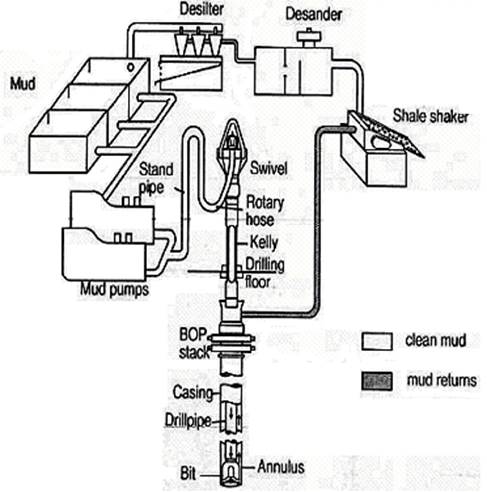 |
Figure 7. Mud circulation system.
Having been cleaned, the mud is transferred into mud tanks, large treatment and storage units. From there a powerful pump brings the mud up through a pipe {standpipe) and through a hose connected to the swivel (rotary hose) forcing it down the hole inside the drill string. Eventually the cleaned mud will exit again through the bit nozzles. Originally, “mud” was made from clay mixed with water, a simple system. Today the preparation and treatment of drilling fluid has reached a sophistication which requires specialist knowledge. The reason for this becomes clear if we consider the properties expected.
In order to effectively lift the cuttings out of the hole a certain viscosity needs to be achieved, yet the fluid must remain pumpable. If the mud circulation stops, for instance to change the bit, the mud must gel and any material suspended in it must remain in suspension to avoid settling out at the bottom of the hole. It has to be stable under high temperatures and pressures as well as at surface conditions. Mud chemicals should not be removable by the mud cleaning process. Drilling fluids have to be capable of carrying weighing material such as barites in order to control excessive formation pressures. They have to be compatible with the formations being drilled, e.g. they should prevent the swelling of formation clay and not permanently damage the reservoir zone. Last but not least, since these fluids are pumped, transported and disposed in large quantities they should be environmentally friendly and cheap!
Most drilling fluids are usually made up using water and called water based muds (“WBM”). Another frequently employed system is based on oil, oil based mud (“OBM”). The advantage of OBM is better lubrication of the drill string, compatibility with clay or salt formations and a much higher rate of penetration. Diesel fuel is usually used for the preparation of OBM. During operations, large quantities of contaminated cuttings were formerly disposed of onto the sea-bed. This practice is no longer considered environmentally acceptable and the cost of adequate disposal of OBM has reduced its use.
New mud compositions and systems are continuously being developed, for instance currently the industry is introducing synthetic drilling fluids which rival the performance of OBM but are environmentally benign.
The choice of drilling fluid has a major impact on the evaluation and production of a well. Later in this section, we will investigate the interaction between drilling fluids, logging operations and the potential damage to well productivity caused by mud invasion into the formation.
An important safety feature on every modern rig is the blowout preventer (“BOP”). As discussed earlier on, one of the purposes of the drilling mud is to provide a hydrostatic head of fluid to counterbalance the pore pressure of fluids in permeable formations. However, for a variety of reasons the well may ‘kick’, i.e. formation fluids may enter the well bore, upsetting the balance of the system, pushing mud out of the hole, and exposing the upper part of the hole and equipment to the higher pressures of the deep subsurface. If left uncontrolled, this can lead to a blowout, a situation where formation fluids flow to the surface in an uncontrolled manner.
Blowout preventers are a series of powerful sealing elements designed to close off the annular space between the pipe and the hole through which the mud normally returns to the surface. By closing off this route, the well can be ‘shut in’ and the mud and/or formation fluids are forced to flow through a controllable choke, or adjustable valve. This choke allows the drilling crew to control the pressure that reaches the surface and to follow the necessary steps for 'killing' the well, i.e. restoring a balanced system. Figure 8 shows a schematic of a typical set of blowout preventers.
Blowout preventers are opened and closed by hydraulic fluid stored under a pressure of 3000 psi in an accumulator, often referred to as a ‘Coomy’ unit.
All drilling activity will be carried out by the drill crew which usually works eight or twelve hour shifts. Instrumentation will enable them to monitor and control the drilling parameters, specifically:
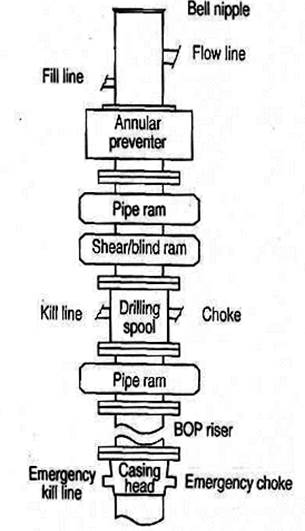
Figure 8. Schematic of a blowout preventer (BOP).
· hook load
· torque in drill string
· weight on bit (WOB)
· rotary speed (RPM)
· pump pressure and rate
· rate of penetration (ROP in min/ft)
· mud weight in and out of the hole
· volume of mud in the tanks.
The roughnecks work on the rig floor, adding singles, round tripping etc. The derrick man handles the pipe up in the mast. In addition to the drilling crews, drilling operations require a number of specialists for mud engineering, logging, fishing etc., not to forget maintenance crews, cooks and cleaning staff. It is not uncommon to have some 90 people on site. The operation is managed on site by a drilling engineer or “tool pusher”.
5.3. Translate the following word combinations into English. Use the text:
Ожидаемые свойства, достичь вязкости, циркуляция бурового раствора, оставаться во взвешенном состоянии, быть совместимым с пробуриваемым пластом; последнее по порядку, но не по важности; буровой раствор на водной основе, больше не, оказывать большое влияние, эксплуатационная скважина, исследовать взаимодействия, важная особенность, по разным причинам, приводить к выбросу, перекрыть движение (маршрут), достичь поверхности.
5.4. Match the words in list A with the words from list B to make word combinations. Translate them:
A. 1) specialist 2) mud 3) formation 4) water based 5) blowout
6) well 7) drilling 8) hook 9) rotary 10) assistant
B. a) bore b) speed c) knowledge d) pressure e) driller
f) crew g) load h) circulation i) muds j) preventer
5.5. Fill in the gaps to make the following sentences complete using one of the verbs from the list below:
a) flows b) requires c) removes d) allows e) brings f) stops
g) reaches h) cools i) runs over j) has k) is l) needs
1) The mud ________ the bit and _________ the cuttings by carrying them up the hole outside the drill pipe.
2) At the surface the mud ________ a number of moving screens which remove the cutting for disposal.
3) From mud tanks a powerful pump _______ the mud up through a pipe and a hose connected to the swivel.
4) Sophistication of drilling fluids ____________ specialist knowledge.
5) To lift the cuttings out of the hole a certain viscosity __________ to be achieved.
6) If mud circulation ________ to change the bit, the mud must gel.
7) The advantage of OBM _____ better lubrication of the drill string.
8) The choice of drilling fluid _______ a major impact on the evaluation and
production of a well
9) In a situation of a blowout formation fluid _______ to the surface in an uncontrolled manner.
10)The choke ______ the drilling crew to control the pressure that _______the
surface valve.
5.6. Define the Tense forms used in the following sentences. Translate them.
1) Having been cleaned the mud is transferred into mud tanks.
2) The cleaned mud will exit again through the bit nozzles.
3) Today preparation and treatment of drilling fluid has reached a sophistication.
4) The mud has to be stable under high temperatures and pressures as well as at
surface conditions.
5) Since drilling fluids are pimped, transported and disposed in large quantities they
should be environmentally friendly and cheap.
6) New mud compositions and systems are continuously being developed.
5.7. Answer the following questions on the text:
1) In what way was “mud” originally made? 2) What happens if the mud circulation stops? 3) What do drilling fluids have to be compatible with? 4) How are most drilling fluids usually made up? 5) What is an important safety feature on every modern rig? 6) What is one of the purposes of the drilling mud? 7) What does a situation of a blowout mean? 8) What are blowout preventers designed for?
9) What are blowout preventers opened and closed by?
5.8. Translate the fifth abstract of the text into Russian in writing.
5.9. Make up sentences using the following words:
a.host assessment is out as a first impact the to step the legal carried requirements of meet country An environmental.
b. the coated rig is lining cleared of leveled site and with First plastic vegetation,.
5.10. Render the text “Drilling Fluids” either in Russian or in English.
UNIT 6 SITE PREPARATION
6.1. Remember the meaning of the following words and word combinations:
liability - ответственность
air emission - выброс воздуха
effluent and waste disposal – размещение сточных вод и пустых пород
emergency response – реакция на критические обстоятельства
site survey - обследование места
restriction - ограничение
constraint - стеснение, скованность
layout – план, набросок
pit - яма
auxiliary - вспомогательный
level - выравнивать
ensure - обеспечивать, гарантировать
trap - улавливать в ловушку
wreckage - обрушение
reveal - обнаруживать
escape from - мигрировать, улетучиваться
sand lenses - песчаные линзы
leakage - утечка
chimney - труба
overburden - наносы, покров
bore - выбуривать
load bearing capacity - допускаемая нагрузка, грузоподъемность
footprint – след, отпечаток
6.2. Read and translate the text using a dictionary:
SITE PREPARATION
Once the objectives of the well are clear, further decisions have to be made. One decision will be where to site the drilling location relative to the subsurface target and which type of rig to use.
If no prior drilling activities have been recently carried out in the area, usually an environmental impact assessment (EIA) will be carried out as a first step. An EIA is usually undertaken to:
· meet the legal requirements of the host country
· ensure that the drilling activity is acceptable to the local environment
· quantify risks and possible liabilities in case of accidents
An EIA may have to include concerns such as:
* protection of sites of special interest (e.g. nature reserves, archaeological sites)
* noise control in built-up areas
* air emission
* effluent and waste disposal
* pollution control
* visual impact
* traffic (rig transport and supply)
* emergency response (e.g. fire, spills)
Onshore Sites
A site survey will be carried out, from which a number of parameters can be established, e.g. carrying capacity of the soil at the planned location, possible access routes, surface restrictions like built-up areas, lakes, nature reserves, the general topography, possible water supplies. The survey will allow the adequate preparation of the future location. For instance, onshore in a swamp area the soil needs to be covered with support mats.
The size of the rig site will depend on operational requirements and possible constraints imposed by the particular location. It will be determined by:
· the type of derrick or mast; it must be possible to rig this up on site
· the layout of the drilling equipment
· the size of the waste pit
· the amount of storage space required for consumables and equipment
· the number of wells to be drilled
· whether the site will be permanent (in case of development drilling)
A land rig can weigh over 200 tons and is transported in smaller loads to be assembled on site.
Prior to moving the rig and all auxiliary equipment the site will have to be cleared of vegetation and levelled. To protect against possible spills of hydrocarbons or chemicals the surface area of a location should be coated with plastic lining and a closed draining system installed. Site management should ensure that any pollutant is trapped and properly disposed of.
If drilling and service personnel require accommodation at the well site a camp will need to be constructed. For safety reasons the camp will be located at a distance from the drilling rig and consist of various types of port cabins. For the camp, waste pits will be required, access roads, parking space and drinking water supplies.
Offshore Sites
The survey requirements will depend on rig type and the extent of the planned development e.g. single exploration well or drilling jacket installation. Atypical survey area is some 4 km by 4 km centred on the planned location. Surveys may include
1) sea-bed survey:
Employing high resolution echo-sounding and side scan sonar imaging, an accurate picture of the sea bottom is created. The technique allows the interpreter to recognize features such as pipelines, reefs, and wreckage.
Particularly if a jack-up rig is considered, an accurate map of these obstructions is required to position the jack-up legs safely. Such a survey will sometimes reveal crater-like structures (“pock marks”), which are quite common in many areas. These are the result of gas escape from deeper strata to the surface and could indicate danger-from shallow-gas accumulations.
2) shallow seismic:
Unlike ‘deep’ seismic surveys aimed at the reservoir section the acquisition parameters of shallow surveys are selected to provide maximum resolution within the near surface sedimentary layers (i.e. the top 800 m.) The objective is to detect indications of shallow gas pockets. Gas may be trapped within sand lenses close to the surface and may enter the borehole if penetrated by the drill bit, resulting in a potential blowout situation. Gas chimneys are large scale escape structures where leakage from a reservoir has created a gas charged zone in the overburden.
3) soil boring:
Where planned structures require soil support, e.g. drilling jackets or jack-up rigs, the load bearing capacity has to be evaluated (just like on a land location). Usually a series of shallow cores are taken to obtain a sample of the sediment layers for investigation in a laboratory.
Particularly for jack-up rigs, site surveys may have to be carried out prior to each reemployment to ensure that the rig is positioned away from the previously formed ‘footprints’ (depressions on the sea-bed left by the jack-up legs on a previous job).
6.3. Translate the following word combinations into English. Use the text:
Экологическая экспертиза, удовлетворять требованиям, подъездные пути, провести осмотр местности, установить параметры, запас воды, эксплуатационное бурение, собирать на месте, обслуживающий персонал, парковка, очистить от растительности, разведочная скважина, точная картина, в отличие от, осадочные слои, обнаружить признаки.
6.4. Match the words in list A with the words from list B to make word combinations. Translate them:
A. 1) noise 2) emergency 3) access 4) nature 5) waste
6) land 7) survey 8) blowout 9) swamp 10) site
B. a) reserves b) rig c) management d) requirement e) control
f) routes g) pit h) area i) situation j) response
6.5. Choose the only correct variant (A, B or C) to fill in the gaps in the following sentences:
1) EIA will be carried out as a _________ step if there were no prior drilling activities.
a) second b) third c) first
2) In a swamp area the soil needs to be covered with __________.
a) access routes b) support mats c) storage space
3) A land rig can weigh over __________ and is transported in smaller loads to be
assembled on site.
a) 200 kg b) 200 tons c) 2000 kg
4) For safety reasons the camp will be located ________ the drilling rig.
a) at a distance from b) close to c) far away from
5) Crater-like structures are the result of _________ from deeper strata to the surface.
a) water escape b) oil escape c) gas escape
6) Gas may be trapped within ________ close to the surface and may enter the
borehole if penetrated by the drill bit.
a) gas chimneys b) sand lenses c) waste pits
7) Site surveys have to be carried out _________ each reemployment of jack-up rigs.
a) prior to b) after c) simultaneously with
6.6. Answer the following questions on the text:
1) What does EIA mean? 2) What will the site survey allow? 3) What is necessary to do prior to moving the rig and auxiliary equipment? 4) What is done if personnel require accommodation at the well site? 5) What will the survey requirements depend on? 6) What may surveys include?
6.7. Translate the first three abstracts of the text into Russian in writing.
6.8. Make up sentences using the following words:
a.bit top is with formations a large soft hole diameter The designed usually to drill drilled.
b. between rocks section of more An consolidated is usually section drilled the consisting top hole and the reservoir intermediate.
6.9. Render the text “Site Preparation” either in Russian or in English.
UNIT 7 DRILLING TECHNIQUES
7.1. Remember the meaning of the following words and word-combinations:
consider – рассматривать
total depth (TD) – 1) общая глубина, проектная глубина; 2) конечная глубина
shallow section – неглубокая часть (скважины), неглубокое расстояние
intermediate section – промежуточная часть (скважины)
reservoir - коллектор, продуктивные пласт; нефтеносный, газоносный пласт
refer to – (зд.) называть
top hole – верхняя скважина
unconsolidated sediments – неуплотненные осадочные породы
consolidated – уплотненный
formation strength – прочность пласта
accordingly – соответственно
main objective = prime objective = target – основная цель
hence - следовательно
ensure – гарантировать
productive interval – продуктивный горизонт, продуктивный интервал
damage – повреждать
commence drilling – начинать бурение
in a land location – (зд.) на суше
cemented cellar – зацементированная устьевая шахта (скважины)
conductor – кондуктор ( первая колонна обсадных труб)
stove pipe – легкая клёпаная труба большого диаметра (используемая как
кондуктор)
pile – (зд.) забивать
accommodate – вмещать, размещать
Christmas tree – фонтанная арматура, фонтанное устьевое оборудование
seal – сальниковое уплотнение , сальник, изолирующий слой
valve – клапан; вентиль; задвижка
once – как только
drill bit – буровое долото
spud – забуривать скважину, приступать к бурению (ствола скважины)
roller cone – 1) коническая шарошка, 2) шарошка долота
treat – очищать
remove – удалять
removal – удаление
mud circulation system – система циркуляции бурового раствора
rate of penetration – механическая скорость бурения, скорость проходки
reduce – снижаться, сокращаться
alleviate – облегчать, смягчать
hole opener – буровой расширитель
log – проводить каротажные операции
logging tools – каротажный прибор, скважинный зонд (для каротажа)
accurate directional drilling – точное направленное бурение
surface casing – кондуктор (первая колонна обсадных труб)
hole collapse – обрушение скважины
shallow aquifer – неглубокий водоносный пласт
deviation angle – угол отклонения
water bearing - содержащий воду, водоносный
influx – приток (воды, воздуха, нефти, газа в скважину)
integrity – целостность, сохранность
well bore – скважина
mature field – давно разрабатываемое месторождение
depletion – истощение, снижение
impair the formation – повредить пласт
defer the production – замедлять добычу
sufficient – достаточный
evaluate the formation – оценить пласт
7.2 Read and translate the text using a dictionary:
DRILLING TECHNIQUES
If we consider a well trajectory from surface to total depth (TD) it is better to look at the shallow section and the intermediate and reservoir sections separately. The shallow section, usually referred to as top hole consists of rather unconsolidated sediments, hence the formation strength is low and drilling parameters and equipment have to be selected accordingly.
The reservoir section is more consolidated and is the main objective to which the well is being drilled, hence the drilling process has to ensure that any productive interval is not damaged.
Top Hole Drilling
A base from which to commence drilling is required for the very first section of the borehole . In a land location this will be a cemented "cellar" in which a conductor or stove pipe will be piled prior to the rig moving in. The cellar will accommodate the 'Christmas tree' (an arrangement of seals and valves) (Fig. 9).
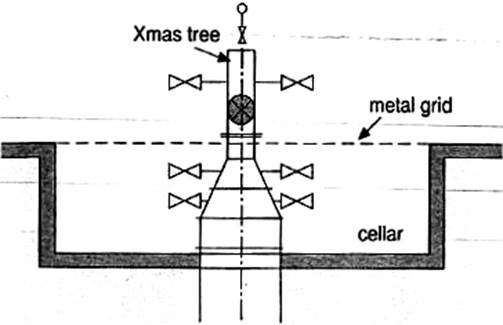
Figure 9. Cellar with Xmas tree on a land location.
As in the construction industry, piling of the conductor is done by dropping weights onto the pipe or using a hydraulic hammer until no further penetration occurs. Once the drill bit has drilled below the conductor the well is said to have been spudded.
The top hole will usually be drilled with a large diameter bit of between 23" and 27" diameter. The drill bit (roller cone type) will be designed to drill soft formations. As a result of the hole diameter and the rapid penetration rate, vast quantities of drilled formation will have to be treated and removed from the mud circulation system.
Often the rate of penetration will be reduced to allow adequate removal of cuttings and conditioning of mud. In some cases the problem is alleviated by first drilling a hole with a smaller diameter bit (12 1 /4") and later redrilling the section to the required size using a hole opener. This is essentially a larger diameter drill bit above the smaller diameter bit. Hole openers are also run if the hole has to be logged (most logging tools are not designed for diameters above 17 1/2") and if accurate directional drilling is required.
A surface casing is finally cemented to prevent hole collapse and protect shallow aquifers.
UNIT 8 DIRECTIONAL DRILLING
8.1. Remember the meaning of the following words and word-combinations:
directional drilling – направленной бурение
constraint – (зд.) ограничение
because of – из-за
multiple targets – множественные цели
fault – сброс; сдвиг (породы); разлом, трещина
deviate – отклонять, отступать, сворачивать
deviated well trajectory – отклоненная траектория скважины
deviated with tangent – отклоненный по касательной
deflect – отклонять, изменять направление
gradually build up the angle – постепенно наращивать угол (отклонения)
kick off point – точка отклонения, точка изгиба
increase (ant. decrease) – увеличивать(ся), возрастать (ант. уменьшать(ся))
‘dog leg’ – 1. искривление (ствола скважины) 2. резкий изгиб (трубы)
result in – приводить к ч-л
excessive torque and drag – чрезмерный вращающий момент и затяжка
(бурильной колонны)
downhole motor – забойный двигатель
‘whipstock’ – отклонитель
insert – вставлять
‘rathole’ – часть ствола скважины уменьшенного диаметра
jet bit deflection = ‘badgering’ – отклонение с помощью струйного\
гидравлического долота
nozzle – сопло, форсунка
cause – вызывать, становиться причиной
mud motor (positive displacement mud motor) – винтовой забойный двигатель
(ВЗД)
mud turbine – забойный турбинный двигатель
continuous seal – сплошной изолирующий слой
dissect – рассекать, разбивать
motor assembly – узел двигателя
cavity – полость, пустота, каверна
rotational force – вращательная сила
‘bent sub’ – скважинный кривой переводчик
turbine blades – лопатки турбины
bearings – подшипники
diamond bit – алмазное долото
composite bit – композитное долото
full gauge hole – полное замерное отверстие
lost circulation material – экранирующий наполнитель
plug up – закупоривать, затыкать
8.2. Read and translate the text using a dictionary:
DIRECTIONAL DRILLING
For many reasons it may not be possible or desirable to drill a vertical well. There may be constraints because of the surface location. In the subsurface, multiple targets, the shape of the structure, faults, etc. may preclude a vertical well. Figure 10 shows some of the deviated well trajectories frequently used in industry; deviated with tangent to target, S-shaped and horizontal.
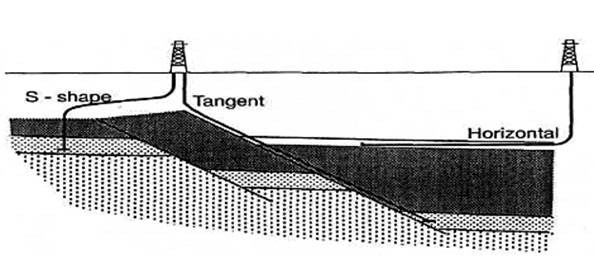
Figure 10. Deviated well trajectories.
Directional drilling requires equipment to deflect the drill bit from the vertical. Initially, angle has to be gradually built up in the desired direction. The kick off point is the depth at which the deviation commences. To build angle several techniques are employed. It is important that the hole angle is not increased or decreased rapidly creating ‘dog legs’ which will result in excessive torque and drag.
Until downhole motors became available a ‘whipstock’ (Fig.11) which is a slightly asymmetric steel joint, was inserted in the drill string.
The assembly is oriented downhole and a ‘rathole’ is drilled which is then enlarged to full bore hole size. The technique is still used in wells where hole conditions, e.g. high temperatures, are unsuitable for downhole motors.
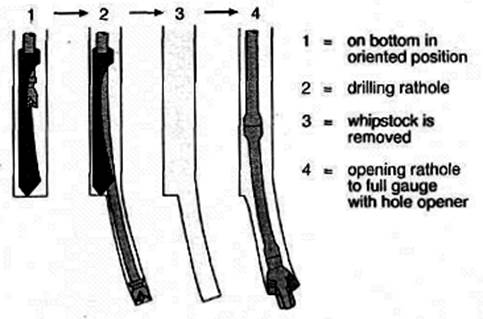
Figure 11. Kicking off with a whipstock.
If a shallow kick off in soft formation is required a technique using jet bitdeflection or ‘badgering’ is employed (Fig. 12). A rock bit is fitted with two small and one large jet. With the bit on bottom and oriented in the desired direction the string is kept stationary and mud is pumped through the nozzles. This causes asymmetric erosion of the borehole beneath the larger jet. Once sufficient hole has been jetted, the drill bit will be rotated again and the new course followed. This process will be repeated until the planned deviation is reached.
In today’s operations a mud motor or a mud turbine are mostly used for directional drilling. Rotary drilling may be carried out between mud motor / turbine drilling i.e. the use of these is often restricted to a certain interval only.
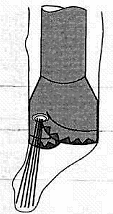
Figure 12. Kicking off by jet bit deflection (‘badgering’).
A mud motor (Fig. 13) is a positive displacement hydraulic motor, driven by the
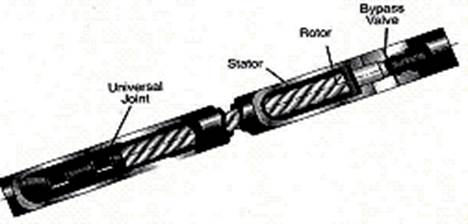
Figure13. Lenghtwise and cross sectional cut through a mud motor.
.
circulated drilling fluid. A continuous seal is formed between the body (‘stator’) and the rotor dissecting the length of the motor assembly into a sequence of wedge shaped cavities. As fluid is pumped through the tool it flows through those cavities creating a rotational force.
To deflect the bit in the desired direction a ‘bent sub’ (with typically to 2° bend) which can be oriented from surface is inserted in the string just above the motor.
An alternative type of downhole mud motor is the mud turbine, (multistage axial flow turbine) which directly drives the bit. The tool consists of an upper section containing the turbine blades and lower section with bearings. As mud is pumped through the upper section the blades are turned. Turbines are designed to rotate at higher speed than the displacement motor. The higher rotation speed requires diamond or composite bits.
Mud motors in general have several advantages over the rotational directional drilling methods. They provide a full gauge hole, dog legs are more likely to be smooth and the penetration rate is usually high. Torque is transmitted more effectively to the bit since the whole drill string is not rotated. This is particularly advantageous in long reach, highly deviated wells. Downhole motors may cause problems if losses occur and lost circulation material needs to be pumped, as this may plug up the motor.
8.3. Give English equivalents for the following phrases. Use the text:
Могут не позволить бурить вертикальную скважину; часто используемый; в желаемом направлении; на которой начинается отклонение; приводить к чрезмерному вращательному моменту и затяжке; слегка асимметричное стальное соединение (стык); вставлять в бурильную колонну; как только образовалось достаточное отверстие; гидравлический двигатель прямого вытеснения; приводимый в движение ч-л; последовательность клинообразных пустот; создавая вращающую силу; другой тип; верхняя часть; нижняя часть; иметь несколько преимуществ над ; скорость проходки обычно высокая; так как вся бурильная колонна не вращается; длинные, сильно отклоненные скважины.
8.4. Match the phrases in column A with their definitions in column B:
A B
1) the kick off point a) a positive displacement hydraulic
motor
2) ‘dog legs’ b) a slightly asymmetrical steel joint
3) jet bit deflection(‘badgering’) c) the depth at which the deviation
commences
4) a mud motor d) the result of a rapid increase or
decrease of the hole angle
5) a mud turbine e) a technique used if a shallow
kick off in soft formation is
required
6) a ‘whipstock’ f) multistage axial flow turbine
which directly drives the bit
8.5. Complete these sentences with a suitable word or phrase:
1) Sometimes it is impossible ……….. a vertical well.
a) to build b) to deflect c) to drill d) to repeat
2) Directional drilling requires special equipment ………… the drill bit from
the vertical.
a) to build b) to deflect c) to drill d) to increase
3) Several techniques are used …………… angle.
a) to build b) to carry out c) to reach d) to repeat
4) …………. is drilled which is later enlarged to full bore hole size.
a) A ’dog leg’ b) A ‘whipstock’ c) ‘Badgering’ d) A ‘rathole’
5) To deflect ………….in the desired direction a ‘bent sub’ is inserted in the
drill string.
a) the bit b) the hole size c) the soft formation d) the bearings
6) The mud turbine consists of an upper section containing the ………… and
lower section with bearings.
a) drilling fluid b) stabilizer c) turbine blades d) bit
7) Mud motors have several ………….. over the rotational directional drilling
methods.
a) problems b) advantages c) disadvantages d) losses
8.6. Answer the following questions on the text:
1) Is it always possible to drill a vertical well? 2) What constraints may preclude a vertical well? 3) What deviated well trajectories are often used in industry? 4) How should the angle be built up in the desired direction? 5) Why is it important to increase or decrease the angle gradually? 6) What do ‘dog legs’ result in? 7) Where is the technique with a ‘whipstock’ still used? 8) Describe this technique. 9) Where is a technique using jet bit deflection employed? 10) How does this technique work? 11) What equipment is mostly used for directional drilling in today’s operations? 12) What is a mud motor driven by? 13) What does the mud turbine consist of? 14) What kinds of bit do turbines require? 15) Why do mud motors have several advantages over the rotational directional drilling? 16) What problems may downhole motors cause?
8.7. Translate the last two paragraphs of the text in writing.
8.8. Make up sentences using the following words:
a. rock wellmay distributed the optimum laterally trajectory of A drilling if provide reservoir or fluids are horizontal.
b. tools data can Petrophysical be out while improved gathering drilling owing carried to the.
8.9. Render the text “Directional drilling” in English or Russian.
UNIT 9 HORIZONTAL DRILLING
9.1. Remember the meaning of the following words and word-combinations:
given the lateral distribution – при условии горизонтального распределения
horizontal well – горизонтальная скважина
build-up rate of angle – скорость увеличения угла
medium radius well – средняя скважина
complete – заканчивать (скважину)
pilot hole – направляющая скважина небольшого диаметра
critical – очень важный, необходи
